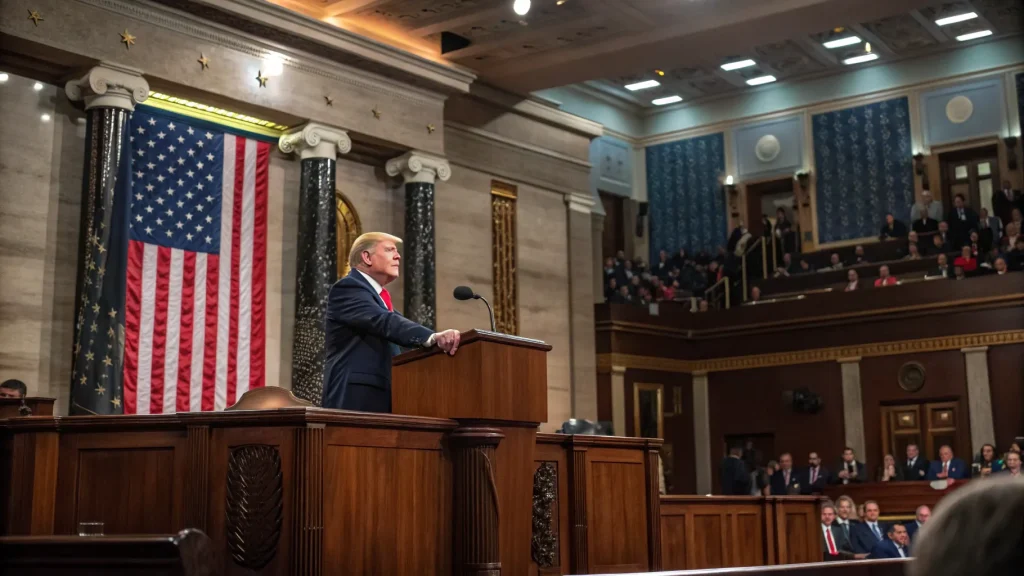President Trump urged Congress to rethink how Washington helps Americans afford health insurance, signaling a fresh fight over the cost and design of coverage.
The call raises questions for millions who use premium tax credits, Medicaid, or employer plans. It also challenges lawmakers to balance cost, access, and choice.
“President Trump called on Congress to change the way the federal government helps Americans pay for health insurance.”
The request suggests a broader policy push, though specific proposals were not detailed. It places health care back at the center of the domestic agenda.
Table of Contents
ToggleHow Federal Help Works Today
Most people with private coverage get help from their employer. Those buying their own plans often receive federal tax credits tied to income and premiums.
Medicaid supports low-income adults and children, with eligibility set by states under federal rules. Seniors and many disabled adults rely on Medicare for core coverage.
During the pandemic, Congress expanded marketplace subsidies. Those richer credits were later extended, lowering monthly costs for many households.
The Political Backstory
Trump has long criticized the Affordable Care Act, which created marketplaces and subsidies. An effort to repeal and replace the law stalled in Congress in 2017.
The individual mandate penalty later ended. But subsidies and protections for preexisting conditions remained popular with voters from both parties.
Recent years saw record marketplace enrollment as subsidies grew and outreach improved. That success raised the price tag for federal support, inviting budget debates.
What Could Be On The Table
The White House did not release a blueprint, but veterans of past debates see familiar options. Each could reshape who pays and who benefits.
- Convert subsidies into flat credits, regardless of local premiums.
- Expand health savings accounts, allowing more tax-advantaged spending.
- Shift Medicaid funding to capped amounts for states.
- Permit leaner plans with lower premiums but fewer protections.
Supporters say these steps can lower headline premiums and spur competition. Critics warn they can raise costs for older or sicker patients and reduce coverage.
Stakeholders See Trade-Offs
Insurers track how any change affects the risk pool. Stable subsidies usually draw in younger, healthier people, which keeps premiums in check.
Hospitals worry about rising uncompensated care if fewer people retain adequate coverage. Rural facilities are especially sensitive to coverage losses.
Employers want predictability. Many fear cost-shifting if individual markets weaken and workers move to job-based plans for better protections.
Patient groups stress preexisting condition safeguards. They argue that skinnier plans can leave families exposed to surprise bills and benefit gaps.
What It Means For Consumers
For marketplace shoppers, the design of tax credits is key. Tying aid to income and local premiums tends to cushion buyers from price spikes.
Flat credits can simplify the system. But they may not keep up with premium growth in high-cost regions or for older enrollees.
Changes to Medicaid funding would push choices to states. Expanded flexibility could invite innovation or cuts, depending on budgets and politics.
Budget Pressures And Timelines
Health subsidies are a large federal expense. Any redesign will be weighed against deficit targets and tax policy priorities.
Congress faces a tight calendar with other must-pass bills. Committee chairs would need hearings, estimates, and industry feedback before a vote.
Analysts will watch for a formal plan, cost estimates, and effects on coverage numbers. Those signals often shape the final bill.
The Road Ahead
The announcement sets an agenda but not the details. The next steps belong to lawmakers, actuaries, and governors who must translate goals into rules.
Expect intense lobbying from insurers, hospitals, employers, and patient advocates. Each will fight over credits, benefits, and state authority.
For families, the stakes are simple: price, access, and predictability. The final design will decide whether premiums fall, benefits shrink, or both.
The takeaway is clear. Washington is reopening the health care playbook. Watch for a concrete proposal, a coverage score, and whether bipartisan votes exist to pass it.
















